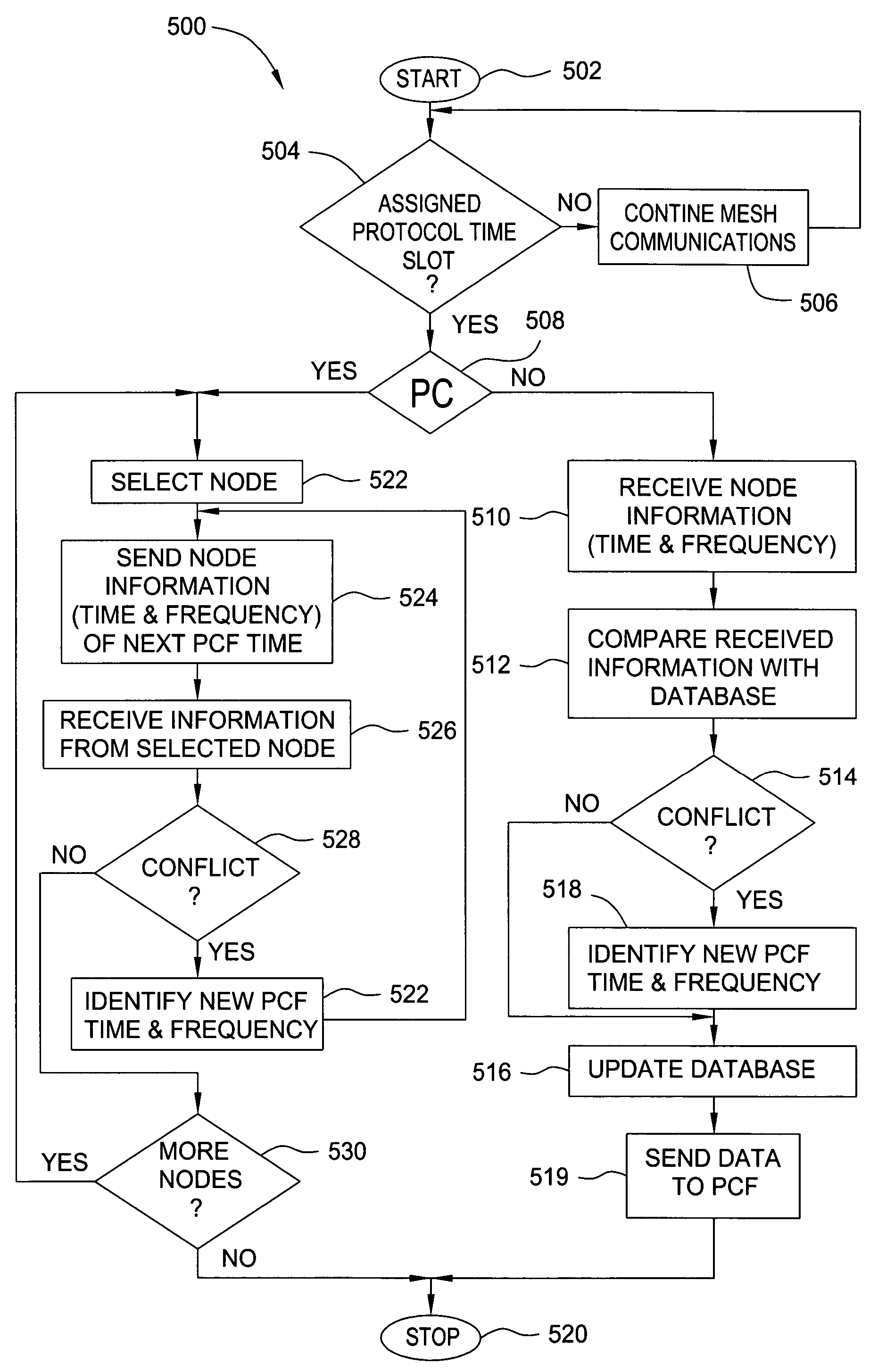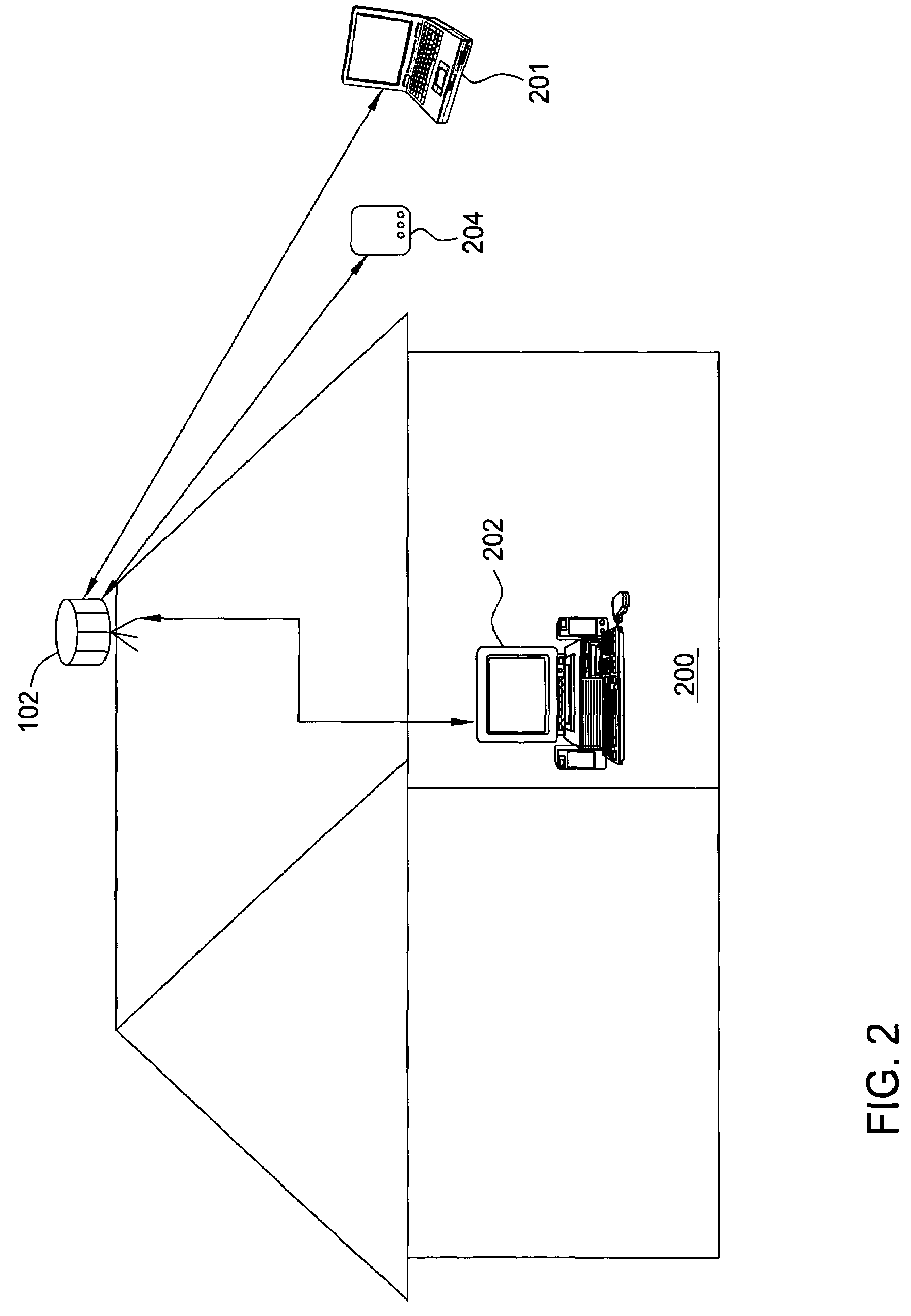Communication protocol for a wireless mesh architecture
a communication protocol and wireless mesh technology, applied in the field of wireless networks, can solve the problems of inability to reach inconvenient use for users and service providers, and inability to provide systems to a significant portion of the population
- Summary
- Abstract
- Description
- Claims
- Application Information
AI Technical Summary
Benefits of technology
Problems solved by technology
Method used
Image
Examples
Embodiment Construction
[0021]The present invention provides for a wireless mesh communication protocol that enables information sharing between consumer premise equipment (CPE) devices and the rest of a network such as the internet. Information is transferred between the network and the CPE devices via a succession of mesh nodes (described subsequently). Some of the mesh nodes can serve as routers, although routers having many more variables than conventional wired, internet routers. Whereas a conventional wired router only needs to determine how to route data to the ultimate destination, a mesh node router selects: how to route traffic to the ultimate destination; the devices it directly communicates with; and when and how to communicate with other mesh nodes. Decisions in any of these areas can and do affect the other decisions.
[0022]The wireless mesh communication protocol has two independent features: dynamic bandwidth allocation and information routing. The mesh network architecture and its communica...
PUM
 Login to View More
Login to View More Abstract
Description
Claims
Application Information
 Login to View More
Login to View More - R&D
- Intellectual Property
- Life Sciences
- Materials
- Tech Scout
- Unparalleled Data Quality
- Higher Quality Content
- 60% Fewer Hallucinations
Browse by: Latest US Patents, China's latest patents, Technical Efficacy Thesaurus, Application Domain, Technology Topic, Popular Technical Reports.
© 2025 PatSnap. All rights reserved.Legal|Privacy policy|Modern Slavery Act Transparency Statement|Sitemap|About US| Contact US: help@patsnap.com



